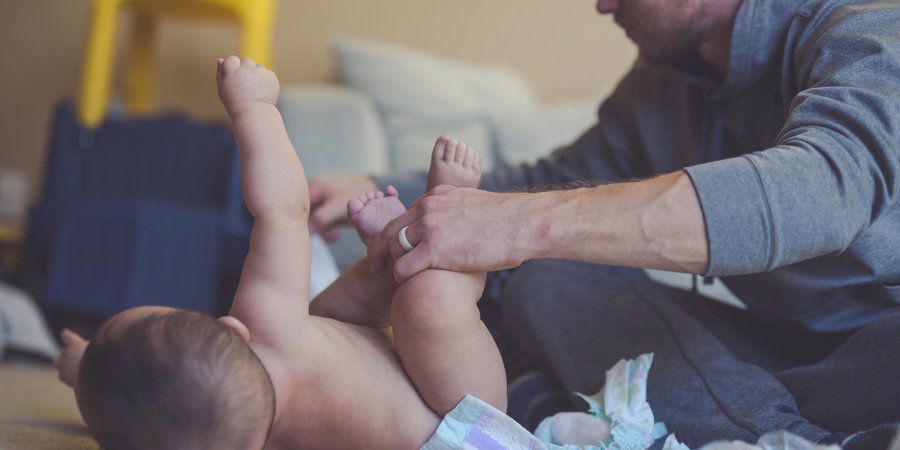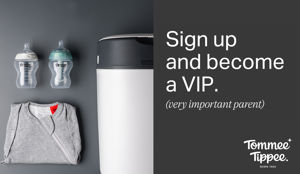Whether you like it or not, the early years of looking after your newborn are going to involve a lot of nappy changing, with some studies showing parents had to change nappies over 2,700 times in the first eighteen months of parenthood, that's up to 12 times a day that your baby may need changing! Nappy changing can, for many, be an extremely stressful part of parenthood, so to help out a bit here are some pointers on how to change a nappy.
Preparation
Given how many times a day it's going to happen, making sure you have everything ready and nearby for a nappy change is crucial, as you might not always be able to make it to your dedicated changing station or place if you have one. Therefore, make sure you have a full changing kit available in all of your most-used rooms. This kit should be prepared for any possible disasters that could occur when you change a nappy.
Everything you need for nappy changing
- Disposable or cloth nappies (Depending on your personal preference)
- Baby Wipes
- Treatment and barrier cream to tackle nappy rash
- Dummies
- Hand sanitiser
- A changing mat or towel
- Envelope fold/easy-on clothing
- Extra towel or a flannel (for unexpected sprinkler wees!)
- Spray bottle (which you can fill with warm water as and when you need it)
- A change of clothes for your little one (crucial for messier changes!)
How to Change Your Baby's Nappy
Now, onto the nappy change itself. If you are unsure as to whether or not your little one needs changing, there are a number of telltale signs given by babies that will let you know that your little one needs a clean nappy.
Signs Your Baby's Nappy Needs Changing
- - A change in colour of the nappy (thanks to a liquid sensitive strip)
- - The nappy being wet to the touch
- - Facial expressions and noises from your baby suggesting discomfort
- - The smell!
If you think your baby needs a change, but they are asleep, you don’t necessarily need to wake them up unless their nappy is extremely wet and could cause discomfort, or their nappy is poopy.
For the nappy change itself, let’s break it down into some simple steps you can follow for a quick and easy changing experience with minimal stress and unwanted wee showers.
How to change a nappy in 6 easy steps
1. Lay your baby onto a clean, safe surface - This could be a changing table, a chest of drawers (covered by a changing mat) or even your bed. If you are using any surface other than a changing table, ensure it is covered with something like a changing mat or towel that can protect it from the inevitable mess.
2. Open the nappy and clean the baby - The messy bit! This part of changing your baby's nappy will vary depending on the contents of the nappy, if your baby’s nappy is just wet then simply fold the nappy underneath your baby, allowing the clean (and more importantly dry!) outside of the nappy to be under their bottom, before wiping clean the surrounding area.
If the nappy is poopy, the process to change your baby is slightly different. To start, wipe as much of the poo as possible up with the nappy itself, before folding the nappy up in the same way as you would with a wet nappy. Once you’ve done this, lift your baby’s legs and begin to wipe clean your baby's bottom but also, after, making sure to clean their front using warm water or baby wipes to clean your little one as fully as possible, and ensuring that the clean goes into all creases.
Top Tip: If your baby is a girl, wipe them clean from front to back to avoid getting poo in the vaginal area
Now that your baby is clean, slide the dirty nappy away from them and replace it with a clean nappy before releasing the baby’s legs so they are on the nappy.
3. Pat baby dry and fully attach the clean nappy - Before finishing the change, make sure the baby is patted fully dry, this means at this stage you can easily apply any nappy rash creams and put on the nappy without causing unnecessary discomfort for your newborn.
Top Tip: Different cream types act in different ways, barrier cream is best used before rashes appear, as this provides protection for your baby's skin against future nappy rash, whereas treatment cream is best used once rashes appear as this helps reduce the symptoms of nappy rash for your baby, so having both available may be a good idea depending on circumstance, for example, if your newborn has sensitive or delicate skin.

4. Dispose of the dirty nappy - Depending on the type of nappies you choose to use for your baby, what you do after the nappy change will vary. If using disposable nappies, wrap the disposable nappy into a ball-like shape, and use the tab fasteners to tie the nappy up securely. Once you have done this, you can throw it away in your nappy bin (or a normal bin if you want to) however never dispose of these nappies by flushing them down the toilet as disposable nappies can cause blockages which will simply cause extra stress you won't need.
If you use reusable or cloth nappies, put the dirty nappy into a tight sealed bucket or container (to avoid the smell!) or a vinyl bag can be an effective solution if out and about, where they can stay safe until it is time to do the laundry.
5. Do any other needed changes - An unfortunate side effect of nappy changing can be a constant need to change your little one’s clothes, as well as any sheets, towels or otherwise that you have used during the changing process thanks to the likely spread of what you were cleaning up, this is completely normal, even if it is slightly frustrating, so make sure to check your little one’s clothes as well as the surrounding area for mess before getting on with your day.
6. Wash your hands - Nappy changing is a messy thing, so to make sure you keep yourself healthy by washing your hands, wash your hands thoroughly once you’ve finished the change to ensure you don’t take in any unwanted germs.
And that’s it, you're done! Having to change your baby's nappy doesn’t seem as stressful now, right?
Managing the Unexpected
Even the most experienced of parents can, at some times, be caught out during a change, whether it's a wee fountain or a poo explosion, babies are experts at finding messy ways to keep you on your toes. That’s why while changing your baby's nappy, you should try and be prepared for every scenario that comes your way.
Poo explosions
They happen to every baby at some point in their life, usually quite unexpectedly (although giving them Weetabix for the first time might be a bit of a clue). The first time it happens, you’re a bit overwhelmed – what do you do with all the mess, and how on earth do you get your baby’s clothes off without making it even worse?!
The good news is that envelope necks on clothes are there for a reason. The extra fabric means that you can pull the vest down over your baby, rather than pulling it off over their head.
There may be some times where the level of devastation means you can not face washing the clothes afterwards. In these cases, cutting the clothes off and chucking them away is acceptable.
Keeping yourself equipped
Keeping a full change kit in your most-used rooms means that you’re always prepared for emergency changes. Make sure you have a couple of nappies, wipes, bags and a mat available; you can always use an old towel or blanket as a mat.
When looking for clothing for your baby, a great thing to look out for is clothes with ‘envelope folds’, this design allows for a quick (and more importantly less messy!) clothes removal if your baby decides to do a slightly more explosive poo than usual, as extra material used in the design allows you to pull the clothes down and off your baby rather than over their head spreading the mess even further.
Nappy cream is pretty much essential for most changes, but it does get everywhere and can be difficult to wash off your hands and clothes. So make sure you use the little finger of your non-dominant hand to apply a thin layer of the barrier cream to the baby's skin, as this way you’re less likely to spread it.
Sprinkler effect
Contrary to popular belief, both boys and girls can have sprinkler wees when you take their nappy off, especially as newborns. Have a flannel or towel to hand to cover them up as soon as you remove their dirty nappy. That should give them enough time to get the wee out and you can move to a safe area!
Switch it up
One day, you may find that your baby is crawling about the house without the nappy you swore you put on them maybe only a few minutes earlier, this is because babies can (and will) learn to take off their own nappy, which could lead to an absolute cleaning nightmare. When your baby works out how to take their own nappy off, there’ll be no stopping them. Try putting it on back to front instead, as it’s much more difficult for babies to reach the tapes at the back which fasten the nappy.
Spray away
If your baby suffers from nappy rash or does a lot of poos, cleaning them can be quite a delicate operation. Even the gentlest of wipes can cause your baby's bottom to be sore, and lead you both to being upset. Keep a small spray bottle of water near your change kit so that you can spritz their bottom after a poo. This should loosen things up enough that wiping is much quicker.
Having to change a nappy is never going to be a highlight of parenthood, but learning how to change a nappy effectively will make life much easier as, unfortunately, it’s just one of those necessary evils that have to be endured, at least now, the next time your baby happens need changing, you will be an absolute pro!
Check out our Best Prams in 2021!



